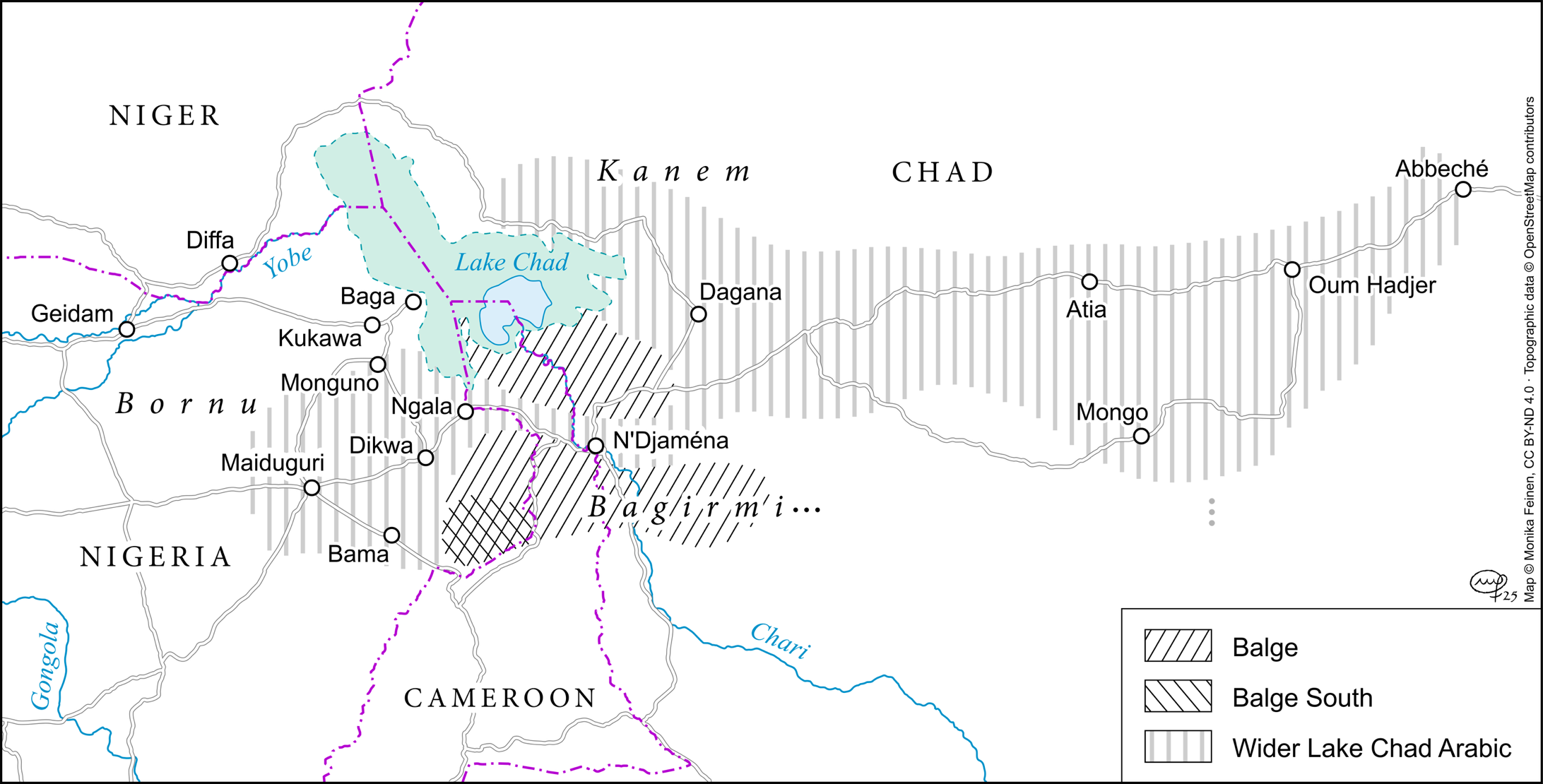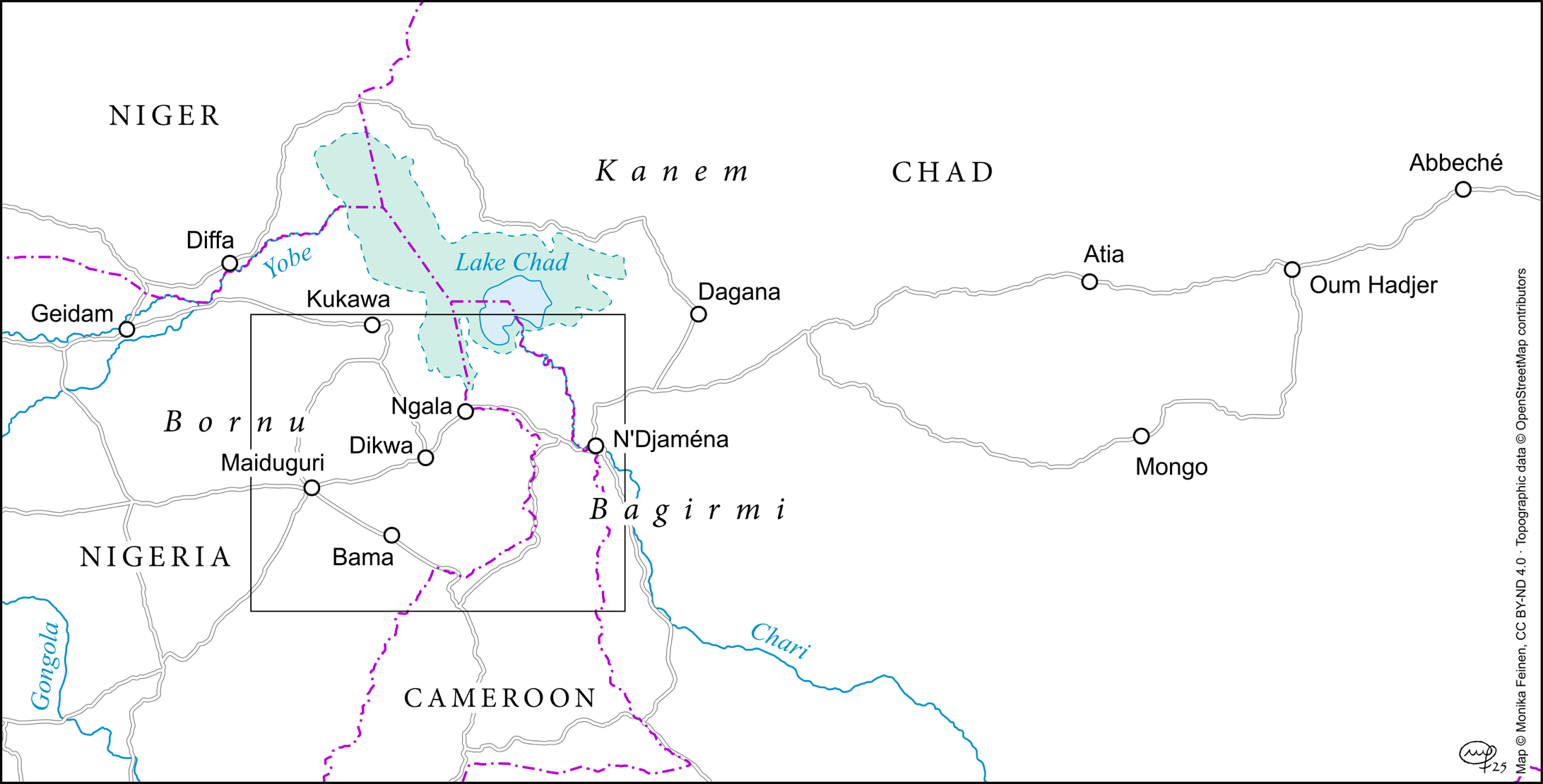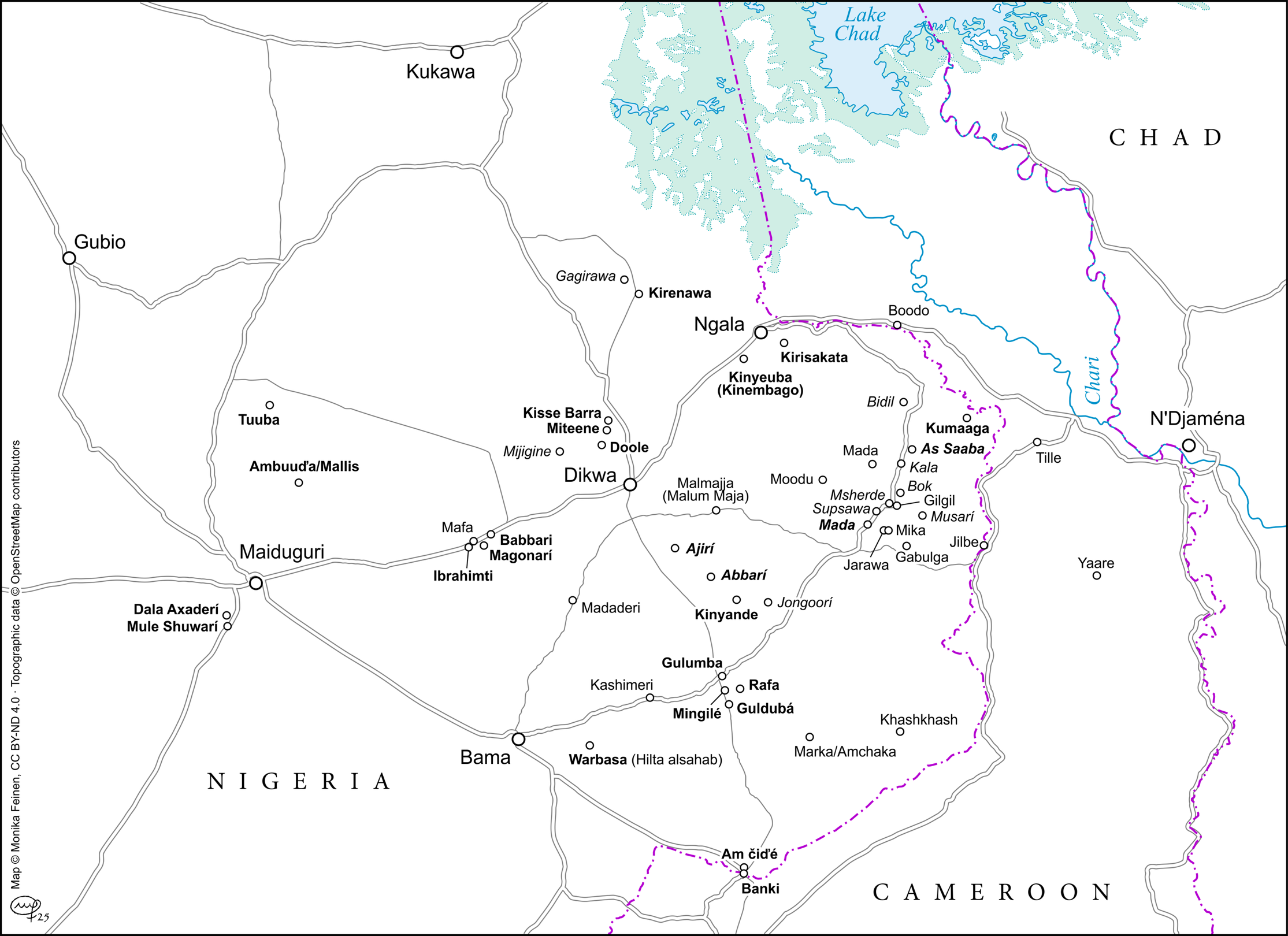Lake Chad Arabic

Map 1 LCA dialects
LCA dialects
- Arabs in the Lake Chad areaHide
- Arabs in the Lake Chad area are first reported in a 1391 letter of the Kanem Mai (king) Uthman Biri to the Mameluke Sultan Barquq. Based on travelers’ writings (e.g. Denham and Clapperton, Barth, Nachtigal), their presence along the Chari River, which in its northern extremity separates Chad from Cameroon, can be inferred by 1540. Today they constitute a large minority group stretching between Gubio in western Borno into Cameroon, Chad, and ultimately the Sudan in the east. Today in Nigeria there are probably between 200,000-400,000 Arabs. Ethnic demographic figures can only be estimated. Increasingly the largest concentration of Arabs – as indeed concentrations of any ethnic group in NE Nigeria – has been gravitating towards cities. This movement has been sharply expedited in the last 15 years by the Boko Haram insurgency which has virtually denuded rural Borno of its sedentary populations (of any ethnic group).
- DesignationHide
- Like all ethnic groups in the region, Arabs have an exonym and a self-designation. Their self designation is simply “ʔArab” (= nafar or nafara). Their exonym, by which they are popularly known in the region, is “Shuwa”.
- Arabic languageHide
- Native Arabic belongs to a larger dialect area encompassing all of the western Sudan (Kordofan, Darfur), Chad, northern Cameroon and the northern part of Borno in NE Nigeria. Within this large geo-dialectal expanse the westerly region beginning about at Abbeché (see Map 1) forms a sub-area marked inter alia by the sound shift *pharyngeal → laryngeal; *ʕ ~ ħ → ʔ ~ h (e.g hilim ‘dream’ instead of ħilim). Speaking very generally and non-technically, Western Sudanic Arabic aligns linguistically with the Arabic of the Nile Valley in the Sudan and Egypt, its ancestral speakers having migrated down the Nile Valley before bending to the west, beginning in about 1200.
- SubsistenceHide
-
Arabs in the Lake Chad region are traditionally farmers and cattle herders. Millet (duxun) and guinea corn (qalla) are the staple crops. Millet is a typical dryland crop and guinea corn a wetland. Cattle herding brought Arabs into the region centuries ago, and until the Boko Haram disruptions cattle herding continued to be a key part of Arabic subsistence and culture. This took two forms: daily pasturing from a village (verb sarah) and nomadic transhumance (našaq). The two are related: when the village cattle became too many – 50 or more – they were sent off to nomadic camps where much larger herds were accommodated. In recent times Arabs of course have entered the heterogeneous urban workforce.

Map 2 Inset
- The sampleHide
-
A large collection of texts, “in their own voices in their own words” is available online at “https://www.arabistik.uni-bayreuth.de/en/research/research-projects/idiomaticity/index.htm". The collection is curated by Jonathan Owens and Jidda Hassan. It is in a simple downloadable format, the texts in PDF or MSWord extension, the audio accompanying them in .wav or .mp3 format. They divide into two large sets. The first goes back to the original research in the area, roughly from the years 1990-1995. It is divided into three sub-sets. Maiduguri interviews were conducted with a sample of 56 individuals. Village interviews were collected in order to gauge the difference between the burgeoning urban metropolis of Maiduguri (now between 1-2 million inhabitants) and the rural migrational source regions. A third set is based on a stylistic factor. Whereas interviews are essential for characterizing the language on a broad basis, by their nature they tend to be formal. Therefore a substantial number of group interviews in which spontaneous conversation was recorded was made. The second large set was recorded between 2021-2025. Here as well interviews and group conversations were recorded. This sample, whose collection is ongoing, targets individuals forced to migrate into Maiduguri by the Boko Haram insurgency and therefore the identity of the speakers has been anonymized. l

